August 6, 2015
Ten Things I’ve Learned in Fifty Years
Cole Thompson was one of the featured speakers at the 2014 PSA Conference. We heard so many good things about his talk that we asked him to write an article for the PSA Journal so those who were unable to attend the conference could read some of what he talked about then. Photos © Cole Thompson
Ten Things I’ve Learned in Fifty Years
by Cole Thompson
I picked up the camera after reading the biography of George Eastman as a 14-year-old boy living in Rochester, NY. Before I finished that book, before I had taken my first picture and before I’d ever seen a print come up in the developer…I was convinced that I was destined to be a photographer. I know that sounds silly, but it’s how I felt then and it’s how I feel to this day.
Many people ask me, “But why black and white? You were born into a color world!”

I reply, “No, I was born into a black and white world!” When I was growing up the world was in black and white.
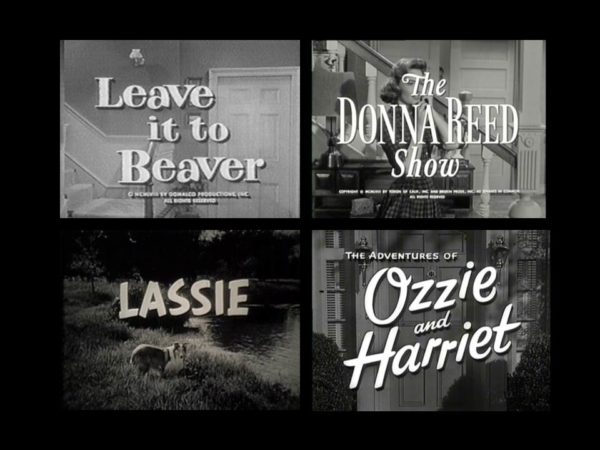
TV was in black and white, movies were in black and white, the news was delivered in black and white, my childhood heroes were in black and white…
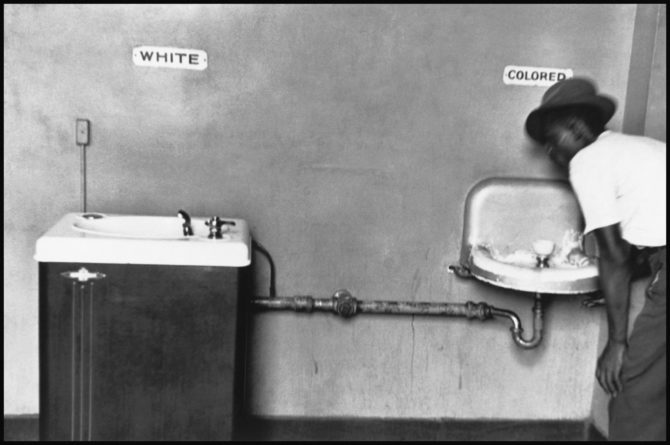
…and even our nation was segregated into black and white.
So I photographed in Black and White and perhaps my images are an extension of the world that I grew up in.
As I think about that innocent young boy I once was, I’m reminded of what motivated me to take pictures those 50 years ago; it was for the pure joy of creating.
But along the way I became a little lost and started creating for the wrong reasons: for fame, fortune, accolades and affirmation until one day I realized that photography was not as fun as it once had been. Today I’ve come full circle and have arrived where I started off; I’ve once again discovered how to create for the pure joy of creating.
Here are some things that I’ve learned that has brought me back to loving photography again and creating the best work of my life.
Here are 10 things that I’ve learned in 50 years:
1. Don’t Aspire to Become the World’s Greatest Imitator.
When I was younger, the ultimate compliment someone could give me would be to say, “Your work reminds me of Ansel Adams’ work.” Because he was my childhood hero, I would dream of creating images just like him. I’d imitate his style and sometimes I’d even go to Yosemite and try to recreate specific images!
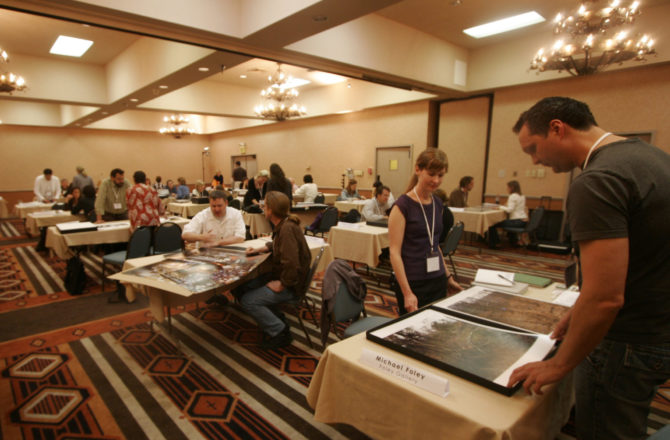
Then several years ago I was attending Review Santa Fe where, over the course of a day, my work was evaluated by a number of gallery owners, curators, publishers and experts in the field.
During the last review of a very long day, the reviewer quickly looked at my work, brusquely pushed it back to me and said, “It looks like you’re trying to copy Ansel Adams.” I replied that I was, because I loved his work!
He then said something that would change my photography and my life: “Ansel’s already done Ansel and you’re not going to do him any better. What can you create that shows your unique vision?”
Those words really stung, but over the next two years the significance of his message sank in. Was it my life’s ambition to be known as the world’s best Ansel Adams imitator? Had I no higher aspirations than that?
I came to realize that I needed to create work that was uniquely mine and not imitative of another. But how was I to do that I wondered? There isn’t a subject that hasn’t been photographed before, so how could I create unique work?
While it’s true that almost everything has been photographed, it has not been photographed through my eyes. We each have a unique Vision and that’s how I can create unique work. The choice was clear: Did I want to imitate or create?
In the end I decided that I’d prefer to create a mediocre original, rather than make a brilliant copy.
2. Vision is Everything
I believe that Vision is what gives your image a soul and it’s what makes your images unique. Great images do not come about because of equipment and processes, but rather from Vision that drives those tools to do wonderful things. What good are great technical skills if you don’t have a Vision worthy of them?
A lot of people have asked me how to go about finding their vision. I’m not sure I can answer that for everyone, but I can tell you how I found mine.
What is Vision?
I desperately wanted to know if I had a Vision, but I had a huge problem. What exactly was Vision and how did I develop it? I researched Vision but I couldn’t relate to the definitions and explanations that I found. Was it a look, a style or a technique? Was it something you were born with or something you developed?
And then there was the nagging doubt: What if I didn’t have a Vision? I feared that it was something you either “had” or you “didn’t have” and perhaps I did not?
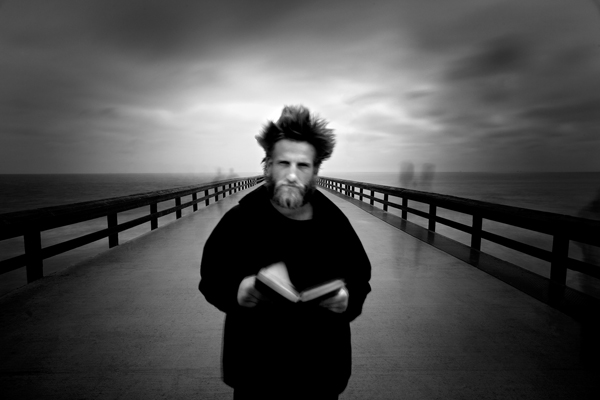
And how was I to go about finding my Vision?
With so many unanswered questions and with no idea on how to proceed, I simply forged ahead and did what made sense to me. Here are the steps that I took:
I Sorted My Images into Two Groups. I took my best images, printed them out and then divided them into two groups: the ones I REALLY loved…and all the rest. I decided that the ones that went in the “loved” pile had to be images that “I” loved, and not just ones that I was attached to because they had received praise, won awards or sold the best. And even if I loved an image that no one else did, I still picked it.
I Made the Commitment. I committed that from that point on, I would only pursue those kinds of images, the ones that I really loved. Too often I had been sidetracked when I chose to pursue images simply because they were popular with others.
I Practiced Photographic Celibacy. I started practicing Photographic Celibacy and stopped looking at other photographer’s work. I reasoned that to find my Vision, I had to stop immersing myself in the Vision and images of others. I used to spend hours and hours looking at other photographer’s work and would find myself copying their style and images. When I looked at a scene I didn’t want to see it through another photographer’s eyes, I wanted to see it through mine!

I Questioned My Motives. One of the hardest things I did was to question my motives and honestly answer some hard questions: Why am I creating?, Who am I trying to please?, What do I want from my photography?, How do I define success? It seemed to me that Vision was something honest and that if I were going to find my Vision, I had to be honest about the reasons I was pursuing it.
I Stopped Caring What Others Thought. I made a conscious decision to stop caring what others thought of my work. I recognized that in trying to please others, I was left feeling insecure and empty. I reasoned that at the end of the day it was just me, my work and what I thought of it. As long as I cared what others thought, I was a slave and could never be free.
What I Discovered. I really was proceeding blindly, but I believed that if I listened to my own desires, pursued what I loved and eliminated all other voices…I would learn something about my Vision. I did this for two years and there were many times that I became completely discouraged and felt like I was failing. I’m not sure what I expected to happen, perhaps I thought I’d have a revelatory experience where my Vision would suddenly appear in a moment of inspiration. But that didn’t happen.
And then one day it simply occurred to me that I understood…I understood what my Vision was. It came in an anti-climactic and quiet moment of understanding, and after all of that worrying and angst…it now seemed so incredibly simple. Vision was not something I needed to acquire or develop, it had been there all along and all I had to do was “discover” it.
Vision was simply the sum total of my life experiences that caused me to see the world in a unique way. When I looked at a scene and saw it a certain way…that was my vision.
I also learned that Vision is not a look or a style. It does not require you to focus on one subject or genre and following your Vision will not make your work look all the same. Vision gives you the freedom to pursue any subject, create in any style and do anything that you want.
3. Don’t Compare Your Work to Others, Art is not a Competition
I noticed that when I compared my work to other photographer’s work, it caused me to have doubts about my abilities and left me deflated. All I could see were their strengths and my weaknesses, which was an unfair comparison.
It’s good for me to periodically remind myself of a few things. If my goal is to produce the best work that I can, then it does not matter what other photographers are doing. As my mother used to say, “Cole, you just worry about Cole.”
Art is not a competition; someone does not have to lose for someone else to win. I am not competing against others…I am trying to be better than myself.
4. Simple is Better than Complicated
I have embarked on a mission to simplify my photography by disposing of everything that is not absolutely necessary to create the image. I have simplified my equipment, my post processing, my matting and framing. I now work with a camera, tripod, three lenses and some filters. I use Photoshop and six of its tools. I use a printer with stock inks.
If a piece of equipment or a process is not necessary, I get rid of it. For too long I was a technophile who almost worshipped my equipment and at times it seemed as though my equipment was more important than the image itself!
I’ve adopted this “simple” approach as a way to focus myself on the things that really do matter: my Vision and composition. Some people feel that they cannot produce a good image with just the simple basics, but I disagree. From my experience the basics can produce incredibly beautiful images that most people would envy.
I’m not saying that there aren’t some gadgets and programs that would improve the quality of your work, but by far the largest improvement any of us can make is to improve ourselves before our equipment. I tell people that if there is a place for some of these extras, it comes after our Vision and composition has been mastered. Simple is always better than complicated.
5. If You’re Not Passionate About Your Project, Choose A New One.
Sometimes people ask me what they should do when they find it hard to get motivated on their project. My answer is, “find another project.” For me, a successful project must have two ingredients: Vision and Passion. If I don’t feel these, I know the project is doomed; it will be a chore to work on and that lack of passion will be felt by the viewer.
Many feel that the key to a successful project is to have a unique subject, an exotic location or an interesting technique. And while those qualities may help, only Vision and Passion can ensure success. When you have a Vision and Passion for your project, that energy and conviction will be felt through your images.
After I created my Ghost series at Auschwitz, many people suggested I apply the ghost theme to other locations. The idea sounded logical: the Auschwitz series had been well received and so why not leverage that popularity by using the same approach at other locations? So I started to work on “The Ghosts of Great Britain” where I created ghosts at English castles. But the project fell flat because the images were not compelling and it felt gimmicky to me.
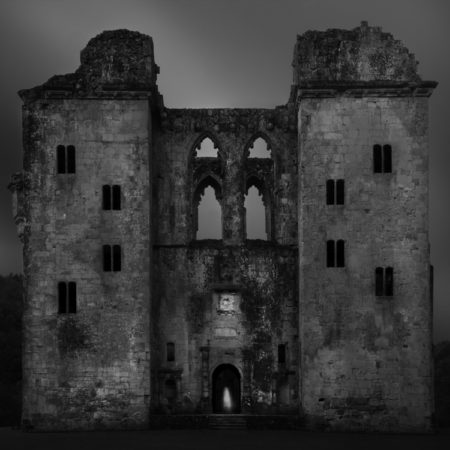
So what went wrong with the project? Simple, it lacked Passion. At Auschwitz I felt inspired to create those images and I had a Vision for the project. I gave no thought as to how the series would be received and in fact I didn’t care!
However “The Ghosts of Great Britain” was completely contrived and calculated to be popular. I did not feel that same Vision or Passion for the project and it failed. I scrapped the series and only kept the one image above. This was a great lesson for me and a mistake that I will never make again.
6. Don’t Follow Any Photographic Rules
What photographic rules should you follow? None, unless you want to create average images that thousands of other people have created before you. Ansel Adams said, “ The so-called rules of photographic composition are, in my opinion, invalid, irrelevant, immaterial.”
I’ll go one step further and say, “In my opinion following the rules of photography is actually harmful because they get in the way of developing independent creativity and Vision.”
Creating compositional rules is an attempt to distill the creative process into a series of guidelines that, if followed, will produce a great image. Do you remember the old “paint by numbers” kits? We were promised that if we’d simply follow the rules by using the proper color, and paint that into each numbered area, and stay within the lines…we would have a masterpiece!
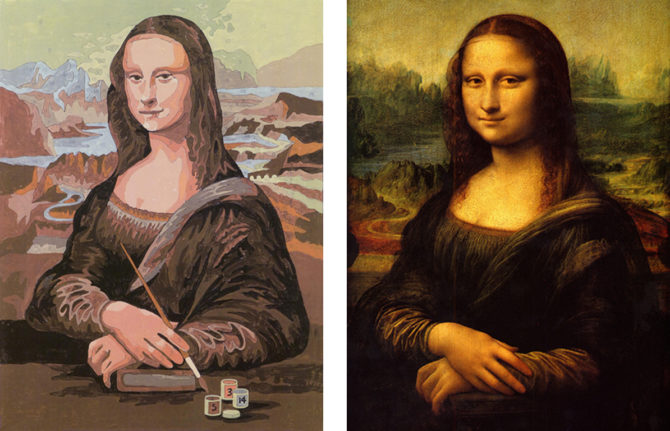
Well, maybe a “competent” painting, but certainly not a masterpiece!
Do you remember IBM’s Deep Blue computer? It was programmed to play chess and it beat the world champion chess player, Garry Kasparov. Do you think that if we were to program the rules of photography into Deep Blue and take it to Yosemite, that it could beat Ansel Adams? Of course not, because composition is about seeing and feeling, not about following rules. And the irony of these rules is that they are supposed to help you learn to be creative, when what they actually do is cause creative dependency.
When I approach a scene, I simply look and see and feel. I compose instinctively until the scene feels right, without a single thought about the “rules.” And if the composition doesn’t feel right, I change it. In the end all I care about is that the image “feels right.”
What a simple and empowering concept; to see and feel for yourself rather than following rules. Creative people already know this secret, that
great art comes from within and is not found in a set of rules.
7. Don’t Listen to Other People’s Advice
Do you know anyone who feels free to offer advice about your images? They often say something like this: “Here’s what I would do…” or “If this were my image I’d…” The problem with other people’s advice is that it doesn’t come from your Vision, but rather theirs.
People will often send me an image and ask what I would do to it and here’s how I respond: If you were to follow my advice, after a while your images would start to look like mine! Is that really what you want? Wouldn’t you rather find your own Vision and create your own masterpieces?
So much of the advice people offered me never felt right and I was torn between respecting the recommendation of experts or following my own intuition. In the end I decided that only by pleasing myself could I create my best work; and that no matter how expert someone was, they were not an expert about my Vision.
Follow my advice and don’t listen to other people’s advice!
8. Use Photoshop However Works Best for You
I use a very simple workflow and for years I would never let anyone see me work because I thought I was doing everything wrong. As I listened to other photographers talk about their sophisticated processes, I was embarrassed to let them see my rudimentary ones. What if they started talking to me about layers or curves…I didn’t use or even understand them!
With time I came to the realization that photography is not about the process, it’s about the image. Nothing else matters. There are many ways to use Photoshop and I doubt that many photographers use more than a small percentage of its many tools. There is no right way or wrong way to use it and not one workflow will be right for everyone.
My procedure works for me and I’d like to share it to illustrate a point: You don’t need to know a lot about Photoshop or have a complicated workflow to produce beautiful images. I use only six tools in the processing of ninety-nine percent of my images.
1. RAW Converter—I use Photoshop’s RAW converter to set my image to a 16 bit, 360 ppi, 10×15 TIFF file.
2. B&W Conversion tool—I like Photoshop’s b&w conversion tool and play with each color channel to see how it affects the different colors of my image.
3. Levels—One of the most basic secrets to a great b&w image is to have a good black and white. I use Levels to set the initial black and white point and I use the histogram to judge this. You cannot trust your eyes and so throughout my processing I keep my eye on that histogram to maintain a true black and white.
4. Dodging and Burning—This is where I do most of my processing and where I have the most fun! I feel most at home with dodging and burning because that’s how I worked in the darkroom. I use a Wacom tablet to dodge and burn, which gives me precise and natural control.
5. Contrast Adjustment—After I have the image looking great on screen, experience has taught me that the print will look flat, and so I add some contrast. A monitor uses transmitted light and a print uses reflective light. That means it will take a lot more work to get your print to look as snappy as it does on the monitor. Contrast helps a great deal.
6. Clone Tool—I use the clone tool to spot my images. Cloning is so much better than the old days when you had to spot every single print and your mouth tasted like Spottone all day!
The point I am trying to make is that a workflow need not be complicated to be effective. I doubt a workflow could be simpler than mine! What’s the best way to use Photoshop? Any way that works for you!
9. Technical Skills and Equipment are not the Key to a Great Image.
Technical skills and equipment are not nearly as important as we think! If I had to choose between the best equipment in the world and no Vision or having a Kodak Brownie and my Vision… I’ll take the Brownie.
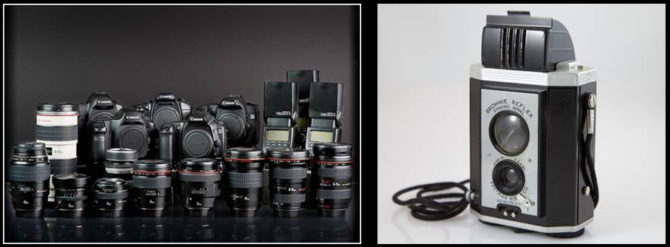
I’m often asked, “What’s the best camera, lens or paper? My answer is always the same: There is no “best.” Most cameras are excellent, almost all lenses are better than their masters and choosing a paper is simply about personal preference.
It’s easy to buy into the notion that the right camera, lens, accessories, plug-ins, printers or paper will transform our ordinary work into extraordinary images. However, from my experience great images are rarely great because they are technically perfect or printed on the right paper.
Put more bluntly: I don’t think it really matters which equipment or paper you choose because they are not the critical component in a great image.
I believe a great image is created mostly from your Vision and that equipment and technical skills play a much smaller supporting role than we generally think.
Vision is what makes an image great and what drives our equipment and processes to do great things.
10. Define Success for Yourself.
I was reading about how the movie “The Beaver” failed miserably at the box office. The article talked about how Jodi Foster, who starred in and directed the film, had faith in the film’s message, and when asked about the financial disaster said, “I’ve learned…that if you gauge your self-worth at the box office you will be a very sorry person.“
How do I, as an artist, gauge my self-worth? Do I base it on how many “likes” I get on some social network? Or do I base it on sales, reviews, the galleries I’m in or the awards I receive? For many years I never stopped to ask myself what success meant to me, I just assumed it meant all of those things.
But as I started to achieve success, I noticed that I wasn’t any happier than when I was “unsuccessful” and in some ways I was less happy. Sure it felt good to have my fifteen minutes of fame, but in the morning it was just me, my art and what “I” thought of it.
So I set about to define success for myself and to identify what I wanted to achieve with my photography. It turns out that my definition was quite a bit different than the one I had been chasing for so long! It turns out that I had been trying to achieve something that I really didn’t want.
This lesson learned was second only to the lesson about Vision: Define success for yourself before you go chasing it.
Conclusion:
Most of what I have learned in these 50 years of photography has less to do about photography and more to do about life.
It’s about finding and following your Vision no matter what others think or say. It’s about defining and achieving success for yourself. It’s about being proud of what you do and loving what you create.
It turns out that photography and life have a lot in common.
 Any mention of products or services in this article or anywhere else in the PSA Journal does not constitute an endorsement or approval of those items.
Any mention of products or services in this article or anywhere else in the PSA Journal does not constitute an endorsement or approval of those items.
This article and photographs are reproduced with permission from the August 2015 issue of the PSA Journal, the official magazine of the Photographic Society of America, Inc. (PSA). For information on PSA membership, please write to PSA Headquarters, 3000 United Founders Blvd., Suite 103, Oklahoma City, OK 73112-3940.”

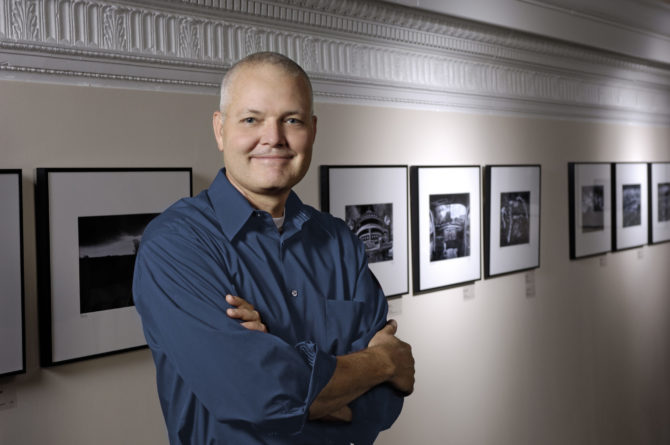
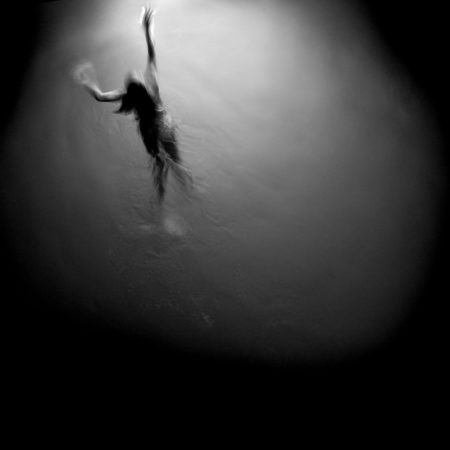
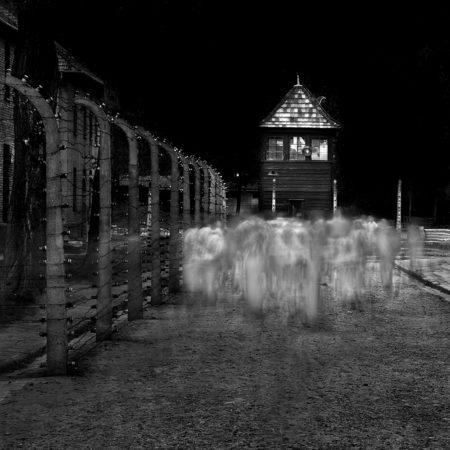

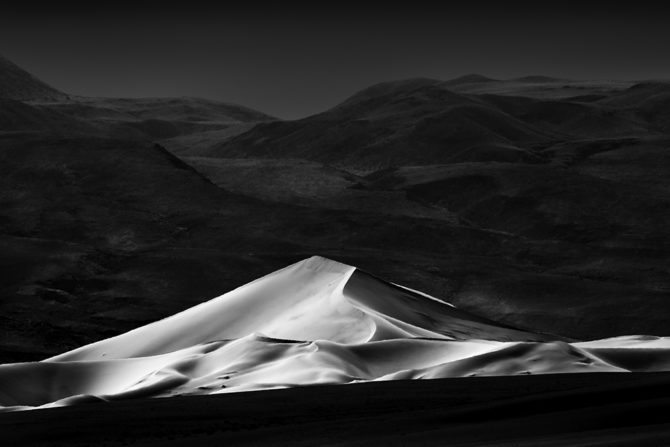


A truly wonderful, insightful, beautifully written compilation of your approach to the photographic art. Had I read this ten years ago I may not have dully understood it but I may have been a much “better” photographer as a result. The single best essay on photography I have ever read – useful, thought-provoking, and inspiring.
A very interesting article and, I suspect, one that many aspiring photographers would do well to read. Our world is full of people looking for feedback and ‘judgement’ on their work and, as you point out, this leads inevitably to the reinvention of the same image at a specific location that has been produced for almost ever (well, from the middle of the 20th Century at least – welcome to Yosemite!). This is seen all too frequently in the world of the Camera Club photographer where the images are produced to please a particular judge and to receive glowing comments ‘through his eyes’. Is that really all we are creating for? I also believe there is an 11th rule as well – Persevere with your belief in yourself – which is probably the hardest thing to maintain and I admire and respect your drive in this area alone.
A fine article and some very, very useful insights and tips for image takers of all ages and experience.
Great advice, I am going to have to re-read this once a week
I know it sounds like you have to give the same message again and again, Cole, but it needs to be heard!
The more I work with photographers who want to improve, the more I wonder if I can teach them anything, as they want to be great imitators, and, as a result, the photos I see from them are imitations of fine photos, but they are not original. This leads to the complaint that there is nothing left to photograph, that everything is an imitation – whether intentional or accidental.
Of course that isn’t the case, and your images are the proof. The truly original artist will have a vision for an image that is original, and will be able to create it.
Thank you once again!
I agree completely with Roger’s response. In fact, I’d love to hear your thoughts on how to write a good article!
I wish every photographer would read this. Wonderful post.
Wise words Cole! I also copied the work of my favourite photographers, even travelling to the same locations but somehow I had no feelings of excitement or joy on looking at the resulting images. I now do as you and take photos of what I want and process them how I want to. The feeling of freedom from those shackles is glorious!
xo
Bravo Cole…..
Good sound sense, Cole! It has taken me nearly until now to understand that I wanted to get some atmosphere, some soul, some of me into my images to make them work, to make them into something more akin to art rather than records of places and things seen….
thanks for sharing,
Thanks so much for sharing your journey. It is enlightening and I have found so much of what you say to be consistent with my own experiences and analysis of what works and what does not in taking and creating images that I like. I do believe, however, that less experienced people can benefit in their earlier stages of development from those things that you correctly state can inhibit them as they develop into more experienced photographers. The trick is, as you discuss, to allow those things to be peeled off to allow ones inner vision to come out. Thanks again for sharing your wonderful advice.
So, very well stated.
I wish you well in this journey… the masters would admire your intention.
Dear Me. Cole Thompson:
You’re hired.
Ha!
Thanks for putting these thoughts together and recording them for others. We are all students and we all have much to learn.
Best to you
Rich
Thanks Cole – a great perspective and read.
I’m not an active photographer although I enjoy looking at photos of all types. I’ve always enjoyed your work. I like what you say in general about finding your Vision and sticking with your very specific taste. These lessons can be applied to other type of work. So it was helpful for me to read and insightful. Thank you for taking the time to write this down and provide insight into your world.
Beautifully put and now I need to print your article and pin it up on the wall to remind my self about each and every point you’ve made, every day. Thanks Cole x
Thank you Cole!
I think we should all stash this away are re-read it regularly!
These insights probably reflect the most important ingredients in the photo process.
what a wonderful insightful piece…just what i needed as i question everything about my photography right now:)thank you…i will be rereading this often…oh and i do love your vision…cheers
A very clear and wise article and I am going to save it and read it regularly as it rings true to me .
Great read. Thanks for sharing. Im all for the one camera, one lens, one film and even one f stop approach.
Thank you Cole for this inspiring tipps and as always your photos are breathtaking !
You are a hero !
Wonderful article Cole. Your photography and philosophy comes from the heart.